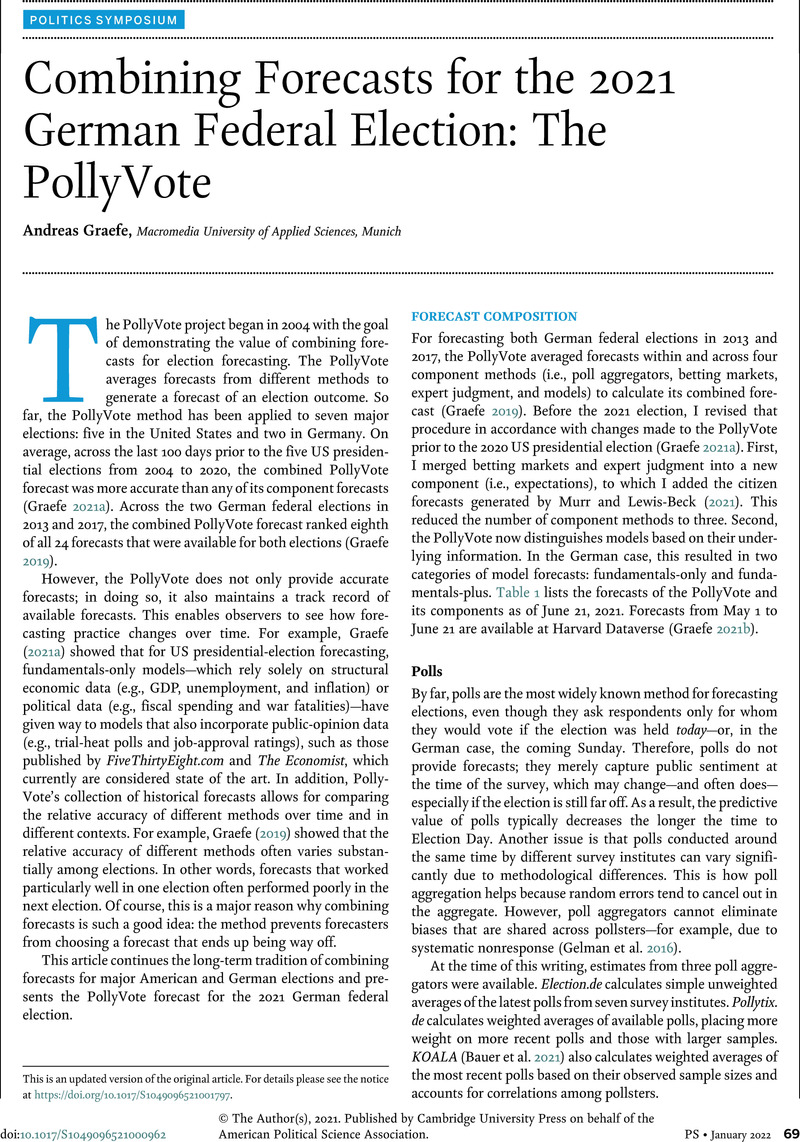Crossref Citations
This article has been cited by the following publications. This list is generated based on data provided by Crossref.
Graefe, Andreas
2022.
Combining Forecasts for the 2021 German Federal Election: The PollyVote – CORRIGENDUM.
PS: Political Science & Politics,
Vol. 55,
Issue. 1,
p.
250.
Jérôme, Bruno
and
Graefe, Andreas
2022.
Forecasting the 2021 German Federal Election: An Introduction.
PS: Political Science & Politics,
Vol. 55,
Issue. 1,
p.
61.





